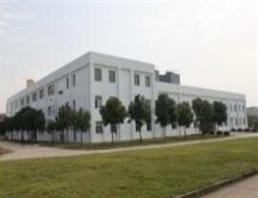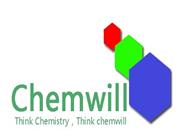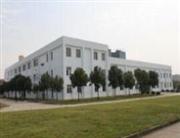Trimellitic Anhydride 552-30-7 in stock factory
1,2,4-Benzenetricarboxylic anhydride
Name 1,2,4-Benzenetricarboxylic anhydride
Synonyms Benzene-1,2,4-tricarboxylic anhydride; Trimellitic anhydride
Molecular Structure
Molecular Formula C9H4O5
Molecular Weight 192.13
CAS Registry Number 552-30-7
EINECS 209-008-0
Properties
Density 1.54
Melting point 164-169 ºC
Boiling point 390 ºC
Flash point 227 ºC
Water solubility DECOMPOSES
Safety Data
Hazard Symbols Xn Details
Risk Codes R37;R41;R42/43 Details
Safety Description S22;S26;S36/37/39 Details
MSDS Available
Trimellitic Anhydride Basic information
Product Name: Trimellitic Anhydride
Synonyms: 1,3-dioxo-5-phthalanacarboxylicaci;1,3-Dioxo-5-phthalancarboxylic acid;1,3-dioxo-5-phthalancarboxylicacid;5-Isobenzofurancarboxylic acid, 1,3-dihydro-1,3-dioxo-;5-Isobenzofurancarboxylicacid,1,3-dihydro-1,3-dioxo-;5-Phthalanacarboxylic acid, 1,3-dioxo-;anhydride-ethomidhtpolymer;anhydridetrimellitique
CAS: 552-30-7
MF: C9H4O5
MW: 192.13
EINECS: 209-008-0
Product Categories: -;addictives;Industrial/Fine Chemicals;Fluorenes, etc. (reagent for high-performance polymer research);Functional Materials;Reagent for High-Performance Polymer Research;fine chemicals;Pyridines;pharmaceutical raw material
Mol File: 552-30-7.mol
Trimellitic Anhydride Structure
Trimellitic Anhydride Chemical Properties
Melting point 163-166 °C(lit.)
Boiling point 390 °C
density 1.54
vapor density 6.6 (vs air)
vapor pressure <0.01 mm Hg ( 20 °C)
refractive index 1.4717 (estimate)
Fp 227 °C
storage temp. Store below +30°C.
solubility 24.4g/l (decomposition)
form Flakes
color White to off-white
PH 2 (21g/l, H2O, 20℃)
explosive limit 1-7%(V)
Water Solubility DECOMPOSES
Sensitive Moisture Sensitive
Merck 14,9703
BRN 9394
Stability: Stable. Moisture sensitive.
CAS DataBase Reference 552-30-7(CAS DataBase Reference)
NIST Chemistry Reference Trimellitic anhydride(552-30-7)
EPA Substance Registry System 5-Isobenzofurancarboxylic acid, 1,3-dihydro-1,3-dioxo-(552-30-7)
Safety Information
Hazard Codes Xn
Risk Statements 37-41-42/43
Safety Statements 22-26-36/37/39
WGK Germany 1
RTECS DC2050000
F 10-21
TSCA Yes
HS Code 29173980
Hazardous Substances Data 552-30-7(Hazardous Substances Data)
Toxicity LD50 orally in Rabbit: > 2730 mg/kg LD50 dermal Rabbit 23000 mg/kg
MSDS Information
Provider Language
Trimellitic anhydride English
ACROS English
SigmaAldrich English
ALFA English
Trimellitic Anhydride Usage And Synthesis
Chemical Properties white crystalline powder,combustible.
Chemical Properties Trimellitic anhydride is a crystalline solid. It is the anhydride of trimellitic acid (1,2,4-benzenetricarboxylic acid).
Uses In the preparation of resins, adhesives, polymers, dyes, printing inks.
Uses Trimellitic anhydride is mainly applied to produce good heat-proof, weather-proof and solvent-proof trimellitate plasticizers, among which the most popular product is tri(2-ethylhexyl)trimellitate. It is also used to synthesize polyester resins.TMA can also be applied to curing agent of epoxy resins.
Uses Trimellitic Anhydride is mainly used as raw material for polyester resin,polyimide resin,plasticizer TOTM ,and also be used for producing heatproof & insulating,adhesive,surfactant, paint,synthesize dye materials etc. Trimellitic anhydride is used as an embossing agent for vinyl flooring and as a curing agent for epoxy resins. It is also used as an intermediate for the synthesis of surface coatings chemicals, adhesives, polymers, dyes printing inks, pharmaceuticals .
Definition ChEBI: A 2-benzofuran compound having oxo groups at the 1- and 3-positions and a carboxy substituent at the 5-position; the cyclic anhydride formed from the carboxy groups at the 1- and 2-positions of trimellitic acid.
Air & Water Reactions Sensitive to moisture. Hydrolyzes slowly. Solutions in water or alcohol may be unstable. Insoluble in water.
Reactivity Profile 1,2,4-Benzenetricarboxylic anhydride reacts exothermically with water. This reaction is expected to be slow, but can become vigorous if local heating accelerates it. Reaction with water is accelerated by acids. Incompatible with acids, strong oxidizing agents, alcohols, amines, and bases. Incompatible with strong oxidizing agents, strong acids or strong bases. .
Hazard Toxic by inhalation. Respiratory sensitization.
Safety Profile Moderately toxic by ingestion. Has caused pulmonary edema from inhalation. Irritant to lungs and air passages. May be a powerful allergen. Typical attack consists of breathlessness, wheezing, cough, running nose, immunologcal sensitization, and asthma symptoms. When heated to decomposition it emits acrid smoke and irritating fumes. See also ANHYDRIDES.
Potential Exposure TMA is used to produce trimellitate plasticizers, poly (amide-imide) polymers; in paints, enamels, and coatings; polymers, polyesters; as a curing agent for epoxy and other resins; in vinyl plasticizers; agricultural chemicals; dyes and pigments; pharmaceuticals, surface active agents; modifiers, intermediates, and specialty chemicals.
Incompatibilities Dust can cause an explosion. Incompatible with oxidizers (chlorates, nitrates, peroxides, permanganates, perchlorates, chlorine, bromine, fluorine, etc.); contact may cause fires or explosions. Keep away from alkaline materials, strong bases, strong acids, oxoacids, epoxides. Reacts slowly with water, forming trimellitic acid. Compounds of the carboxyl group react with all bases, both inorganic and organic (i.e., amines) releasing substantial heat, water and a salt that may be harmful.
Waste Disposal Dissolve or mix the material with a combustible solvent and burn in a chemical incinerator equipped with an afterburner and scrubber. All federal, state, and local environmental regulations must be observed.
Trimellitic Anhydride Preparation Products And Raw materials
Preparation Products Triethylene glycol dimethacrylate-->Rhodamine 123-->Triisooctyl phosphite
Raw materials Polyvinyl chloride-->Triethylene glycol dimethacrylate-->Cobalt acetate-->1,2,4-Trimethylbenzene-->MANGANESE(II) ACETATE-->1,1,2,2-Tetrabromoethane-->POLY(1-GLYCEROL METHACRYLATE)-->ALKYD RESIN-->Polyurethane-polyvinyl chloride imitation leather-->DIOCTYL PHTHALATE (DOP)-->Curing agent for epoxy resin-->POLYIMIDE RESIN


 China
China

